- Home
- Thomas Keneally
Australians, Volume 2 Page 8
Australians, Volume 2 Read online
Page 8
The tendency of the majority to see the Catholic Australians as utterly Pope- and priest-ridden was enhanced by the newly defined doctrine. Ordinary Catholics sometimes thought that any directive from Rome was binding, and that any bishop seeming to speak for Rome could utter binding judgments covering the whole of life. But the irony was that far from intending his primacy as a tool to make Irish Catholics disobey civil power, Pope Pius IX and his followers wanted them, for the sake of good relations with Britain, to be less politically engaged in the Irish question, the question of Irish independence. The Vatican wanted, for diplomacy’s sake, the Irish to exhibit loyalty to Crown and Empire.
A Catholic colonial politician like the eloquent and prodigiously gifted Gavan Duffy abominated the Vatican’s interference in Irish politics and in Irish nationalist causes espoused in America, Canada and Australia. Monsignor Barnabo of the Vatican had written from Rome forbidding priests in County Meath from attending anti-landlord Tenant League meetings without the Archbishop of Dublin’s express permission. Duffy wrote of this, ‘The Lord God be thanked I am living amongst Irish Catholics [in Victoria] who would go to the stake, rather than deny their faith, but who would sling that insolent missive into the Yarra Yarra. It makes my blood boil to think of a peasant in a mitre, a shallow, conceited dogmatist, a dense mass of prejudice and ignorance, squatting down upon the Irish cause and smothering it.’
These subtleties were lost on the mainstream, who having mistrusted papists earlier now had an added prejudice—in a contest between civil authority and the Vatican, who would the Irish obey?
A CHILDHOOD IN THE CITY
Alfred Deakin was born of English immigrant parents in George Street, Fitzroy, in August 1856, a year after an entirely different species of Australian, the son of a convict, was delivered of his mother Ellen Kelly in a hut in Avenel, and less than two years after Eureka. It was a characteristic of the 1860s and 1870s that one child might live a life appropriate to that of a significant British city and all its enriching institutions, while another might still be a product of slab huts and hessian sack beds, of land and livestock hunger (and theft), and frontier hardship. The childhoods of Alfred Deakin and Ned Kelly might have been lived in parallel universes. In a different sense than in previous decades, Australian life had become diverse. The city intellectual, not utterly lacking before in the person of the soon-to-die (1865) orator, writer and child of convict Daniel Deniehy, and in his friend the cultivated Scottish lawyer and booklover Nicol Stenhouse, now became a more numerous breed. So did the angry sons and daughters of small selectors.
Alfred’s father William was a partner in a cab, coach and dray business, which was taken over in 1857 by a syndicate led by a young American, James Rutherford. The company secured a monopoly on mail delivery and would come to be known as Cobb and Co. But despite the romance which attaches to that name, the evocations of gold escorts and bush banditry, the Deakins were genuine Melbourne suburbanites, and Deakin’s young life was that of any British boy growing up in a British provincial city. Though blasts from the direction of Antarctica gave a grim bite to his winters, and the ferocious breath of the desert descended on him in summer and ringed the civic enthusiasm of the citizens with bushfires, the growing Deakin saw himself not as remotely placed on earth, but as the citizen of a great city of Empire.
When Alfred was six the family moved to South Yarra and lived in what might be called ‘frugal comfort’ by biographers. In the cottage in South Yarra he was towelled by the fire after his bath and presented by his father with books to enrich the intensity of his imagination. He and his older sister Catherine were sent out to Kyneton 50 miles (80 kilometres) from Melbourne to attend a little boarding school run by two sisters, the Misses Thompson. The Misses Thompsons’ establishment seems to have been more a well-regulated country holiday house than one of those fierce rural schools the young Deakin would read about in English children’s literature. The Misses Thompson in any case soon transferred their school to South Yarra.
To a stricter teacher he would have seemed talkative and a little distracted—in modern times his behaviour might even have carried a psychiatric tag. But all such flaws of concentration then were considered to arise from the devil’s influence, and when for the first time in his life he was clapped around the ears by a male teacher, his parents removed him to a nearby school, one within walking distance, the Melbourne Church of England Grammar School.
The city in which Melbourne Grammar was an estimable institution had reached a population of 140 000, such a population comparing notably with that of many major provincial cities in the United Kingdom and the United States. It was a city too which had a university, libraries, theatres and all the facilities appropriate to a community anywhere on earth possessing ambitions to be notable.
The school was, of course, like similar ones founded by Presbyterians, Methodists and the Jesuits, a version of Rugby, Eton, Harrow and Winchester. But instead of holding a quotient of the offspring of hereditary peerages and earldoms, it had sons of squatters, of city merchants much wealthier than the Deakins, and of aspiring (though not rich) families like Alfred’s. The staff of such colonial schools were generally graduates of the major British universities: Oxford, Cambridge, Edinburgh or Trinity College, Dublin. An assumption might have been made that these men were rejects from the British public school system but that would have been unjust to many of them, and to none more so than the headmaster, the Reverend John Edward Bromby, who had once competed for the Cambridge Chancellors’ Medal—as William Charles Wentworth had also done in his youth—against Alfred, Lord Tennyson. He had been recruited while working for his father, a vicar in Hull, but he had earlier been a young headmaster in Bristol and at a private school in Guernsey, and had been University Preacher at Cambridge. He had arrived in golden Melbourne in 1858. Since his manner was never vicious, his sense of humour was advanced, his learning carried lightly, and his cane rarely plied, he was beloved by Deakin as by most of his students. Deakin, a gifted verbal thumbnail sketcher, later said of him that he was ‘breezy, humorous, prompt, passionate and impressive’. He would give boys informal instruction while he chopped wood with them.
Deakin would later regret that he had been too concerned with adventure books and had left his interest in Latin and Greek too late. But a younger teacher, J.H. Thompson, an athlete and a scholar, gradually turned Deakin into ‘a passable student’. There had been apparently some doubt, not least in his own mind, as to whether he would attempt to try to matriculate for entry into the University of Melbourne. But then a forceful boy, one who had quarrelled with his headmaster at another school, turned up as a classmate of Deakin’s. Theodore Fink was the son of a Jewish family who had emigrated from Guernsey and who were merchants in Melbourne. Fink was tall and full of vivacity, and chose to respect only those teachers who had intellectual gifts. Deakin said later that through meeting and conversing with the precocious, happy, mature Fink, he ceased to be a wandering imagination and became a person. And so he passed the matriculation exam in 1871, algebra, Euclid (geometry) and history being the subjects in which he shone. Surprisingly—given his eloquence as a politician—English and Latin were not amongst the subjects at which he excelled.
MAKING GAMES
Tom Wills, son of the massacred Horatio, arrived back in Melbourne, having first created confusion by promising New South Wales that he would play for them in their next intercolonial. But in Melbourne he disavowed the undertaking. The game in the new year of 1863 was, as usual for Sydney intercolonial matches, played in the Domain. Ill feeling was expected, and in fact there was great bitterness between the teams and great complaints about bowling and umpiring. Whatever the rancour, cricket was sucking Tom back to the south-east of Australia.
Around 1860, the cricket clubs of Melbourne (the MCC), Richmond, St Kilda and Corio (Geelong) were well-established entities with both gentlemen (players who played for nothing) and profes
sionals (paid players). The paid players were eternal schoolboys without inherited wealth and eventually, despite his father’s success, Tom Wills would have to become a professional. Cricket at Rugby had involved underarm or round-arm bowling, with the arm not to rise above the shoulder. The young Tom Wills was a ruthless round-arm bowler in intercolonial cricket and was accused of being a thrower and of raising his arm above the shoulder, and of displaying visible joy when he struck a batsman on the body. In one intercolonial match, ‘the Hobart crowd observed with distaste Tom jump about exultantly when the cricket ball hit the batsman’.
But he is remembered for more than his version of bodyline bowling. A letter Tom Wills wrote to the magazine Bell’s Life in early winter 1858 suggested that now cricket had been put aside for the season, rather than allow ‘this state of torpor to creep over them, and stifle their new supple limbs’, the Melbourne Cricket Club should form a football club and appoint a committee of three or more to draw up a code of laws.
There was already football in Australia, of course, both uncodified versions and ancient ones. Various witnesses in the west of Victoria had seen the Aborigines there playing a form of football with a ball made out of tightly rolled plant roots. Did Tom see the game as a child and, if so, did it contribute to the new game? That is, is Australian Rules millennia-old, or simply a post-gold rush phenomenon, a creation of the sporting fever which kept step with other Melbourne enthusiasms in the Golden Age? Irish Australians often assume that the game derived from the then chaotic Gaelic football, which was not codified until 1880, but which in its essence resembled the Melbourne game. But none of the men who devised the first rules had an Irish background, and Gaelic football may have been simply a parallel tendency of sportive humanity.
In any case, advertisements for an initial and experimental game appeared in the Argus and Herald, and on Saturday 7 August 1858 on Richmond Paddock, by the Melbourne Cricket Ground, the first game was played under uncertain laws but roughly on the pattern of football which would increasingly capture the passions of the southern and western regions of Australia from that day on. The first game of the new as-yet uncodified form was primal, contested by forty Scotch College boys against the same number of Melbourne Church of England Grammar boys. Tom Wills was one of the umpires. The game was robust and much ‘rabbiting’ occurred (the bringing down of an opposition player running with the ball by bending down in front of him). The game lasted three hours and ended in a score of one goal each.
On the night 17 May 1859, Tom and four other enthusiasts from the Melbourne Cricket Club met at the Parade Hotel on Wellington Parade, up the hill from the Melbourne Cricket Club. During games there had been by now too many fist fights about rules, and nose-breaking and limb-fracturing confrontations. The men who joined Wills at the Parade were themselves interesting. Newspaper man William Hammersley, Oxford-educated and a cricket fanatic, had first played against Tom Wills during a cricket match when the latter played for the Gentlemen of Kent against the Gentlemen of Surrey at the Oval three years before. Hammersley would later flay Tom in the press, in part because of an unfairly afflicted injury Hammersley suffered from Tom’s play in a football game. But tonight the two men were of one purpose. So was another attendee, Thomas Henry Smith, the classics master at Scotch College. James Thompson, the sporting editor of the Argus, was the fourth member of the party. He too was English-born and studied at Cambridge University. Thus only one of the four men was a native-born Australian, and either meritoriously or not, in part because of his earlier letter to the newspaper, it was Wills’ name which would always be honoured with initiating of one of the earliest codifications of any game on earth.
Wills advised against a slavish imitation of the game then known as Rugby, but to work out ‘a game of our own’. Ten rules were established. Some of them are irrelevant to today’s game but all of them were aimed at preventing chicanery and violence, and promoting fluidity. There were arguments about the taking of penalty goals—Tom desired that the best kicker be given them (as at Rugby), but the others disagreed. The mark, at least in its modern codified form, was sanctioned in rule six that night. Wills wanted an ovoid ball, Thompson a soccer ball.
During a Richmond and Melbourne game two weeks later, in which Wills captained Richmond and Thompson led Melbourne, Wills made it a condition that the ovoid ball be used. Thompson would write in the Argus: ‘Another drawback to an otherwise almost perfect afternoon’s enjoyment was the objectionable shape of the ball.’ There was an argument, too, about a cross bar being placed between the goals. Thus, barely more than three and a half years after the battle of the Eureka Stockade and some three years before Cullin-La-Ringo, Tom helped or—according to many—led the process of codifying a game which, to the new and massively ambitious city, would become its divine frolic, its identifying mark, its focus of civic cohesion between native and newcomer, between Irish minority and British majority, and its map of the world.
FIRST TOURERS
By 1865, when he captained Victoria and scored a then unprecedented 58 runs against the New South Welshmen on the Melbourne Cricket Ground, Tom Wills was at the peak of his authority, having walloped a team which included two All-England players, one of them the Sydney sporting man and cigar parlour owner Charles Lawrence. It did not seem to trouble Tom the cricketer that it was his brothers Cedric and Edgar who were left with the running of haunted Cullin-La-Ringo for the trustees.
The Melbourne Cricket Club passed a motion in January 1866 which raised the possibility of bringing an Aboriginal team to the Melbourne Cricket Ground to play against the Melbourne club. The event would be a splendid fundraiser and, for some of the chief promoters, profitable. Tom Wills, though in theory a gentleman player, was receiving payment in kind and cash from the Melbourne Cricket Club, and he was certainly offered a worthwhile contract when he was appointed coach of the proposed Aboriginal team.
To recruit his team, Tom left for Lake Wallace, near Edenhope, west of the Grampian Mountains. Tom still thought of the Aborigines of his childhood, the Jardwadjali people of the Djabwurrung language group, as substantially different from the murderous crew who had slaughtered his father. The Aborigines he was to coach were the Jardwadjali whose relatives he had known as a boy. He called in young Aboriginal males for trials and found that a young man named Johnny Mullagh, Oonamurriman, was a fine batsman. The team was to play on the Melbourne Cricket Ground on Boxing Day 1866. Tom would play with them.
They attracted a crowd even when they arrived at the Melbourne Cricket Ground for their first practice. Aborigines had become a rarity in the Melbourne area, and the western Victorian players had novelty value.
It proved to be very important to the Melbourne Cricket Club that, as Britons, they should not be defeated by the Western District’s semi-civilised natives, as good as those same cricketers were for the gate takings that day. They stacked their team with players from other clubs, and won by seventy runs, after Mullagh and tall, sturdy Harry Bullocky top-scored for the natives, and the slighter Johnny Cuzens took most of the white wickets. Bullocky was later arrested for drunkenness, but both he and Cuzens were chosen to play for Victoria against the Tasmanians.
A Melbourne entrepreneur of questionable honesty, Captain W.E.B. Gurnett, was now planning to take over the team and bind them to a contract to tour the colonies and England. When the players signed Gurnett’s contract on 8 January 1867 their Aboriginal and European names were both listed. From this document we learn that Jemmy Tarpot’s real name was Murrumgunarriman, that Harry Bullocky’s name was Bullenchanack, that Johnny Cuzens’ name was Yellanach and Dick-A-Dick’s name was Jungagellmijuke. Wills’ name was not on the contract but Gurnett engaged him as coach.
After a series of poorly attended matches in Melbourne and Victorian towns, Captain Gurnett, Tom Wills and the Aborigines left for Sydney by steamer. There they stayed at the Manly hotel of Charles Lawrence, a former English professional who
had settled in Sydney. Sadly, the team had been late arriving in Sydney and the grandstands and booths which had been erected in the Domain for the game had had to be taken down. When the game, which was attended by the governor, was finally played against the Albert Cricket Club at Redfern—a strong team, captained by Lawrence—Tom Wills was arrested as he walked onto the ground under a writ brought by those who had suffered economic loss by the cancellation of the Domain event. He would spend a day in gaol before coming to terms by paying £35 to the claimants. During the game at Redfern that day, as was by now the set program, the Aborigines were required not only to play cricket but to give exhibitions of boomerang and spear throwing, and to ward off thrown cricket balls with shields.
Within a day or so Gurnett was arrested on far more serious fraud charges, since the Victorian leg of the tour had left him virtually bankrupt and he had spread bad paper all over the colony. He was imprisoned in Darlinghurst gaol. There had been criticism anyhow, notably by the secretary of the Aboriginal Protection Board, R. Brough Smith, that the whole business was exploitation of innocence. Smith suggested the Victorian government should prohibit the tour planned for New South Wales and Britain. Now the promoter was in gaol, so the tour was off in any case. The team returned to Melbourne with Wills, and thence to their country near Edenhope in the Western District. On the way back to his homeland, Bilayarrimin, also known as Wattie, died in a cart from lung congestion worsened by intoxication.
Meanwhile, the Central Board in Victoria failed to have legislation passed to look to the welfare of Aborigines contracted for tours, so Charles Lawrence travelled to Edenhope to re-recruit the former team and add some newcomers for a tour of Britain. Thus the first major team to represent Australia internationally was made up of old Australians, not settlers. While the settlers looked upon the northern hemisphere as home, for the Western District cricketers the centre was there, west of Mount William, and all else was the increasingly grim outer world.

 Confederates
Confederates Flying Hero Class
Flying Hero Class Gossip From the Forest
Gossip From the Forest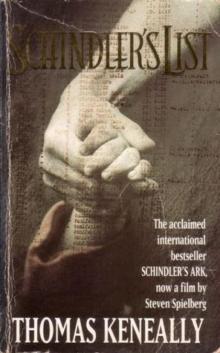 Schindler's List
Schindler's List Bring Larks and Heroes
Bring Larks and Heroes Australians: Flappers to Vietnam
Australians: Flappers to Vietnam The People's Train
The People's Train Crimes of the Father
Crimes of the Father A Family Madness
A Family Madness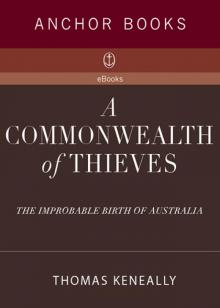 A Commonwealth of Thieves
A Commonwealth of Thieves Ned Kelly and the City of Bees
Ned Kelly and the City of Bees A River Town
A River Town Bettany's Book
Bettany's Book Blood Red, Sister Rose: A Novel of the Maid of Orleans
Blood Red, Sister Rose: A Novel of the Maid of Orleans Victim of the Aurora
Victim of the Aurora American Scoundrel American Scoundrel American Scoundrel
American Scoundrel American Scoundrel American Scoundrel Three Cheers for the Paraclete
Three Cheers for the Paraclete Australians: Origins to Eureka: 1
Australians: Origins to Eureka: 1 The Power Game
The Power Game The Chant Of Jimmie Blacksmith
The Chant Of Jimmie Blacksmith The Daughters of Mars
The Daughters of Mars Searching for Schindler
Searching for Schindler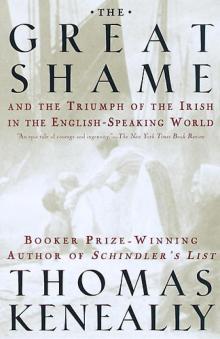 The Great Shame: And the Triumph of the Irish in the English-Speaking World
The Great Shame: And the Triumph of the Irish in the English-Speaking World Abraham Lincoln
Abraham Lincoln The Widow and Her Hero
The Widow and Her Hero Eureka to the Diggers
Eureka to the Diggers Shame and the Captives
Shame and the Captives The Survivor
The Survivor Jacko: The Great Intruder
Jacko: The Great Intruder The Book of Science and Antiquities
The Book of Science and Antiquities Homebush Boy
Homebush Boy The Playmaker
The Playmaker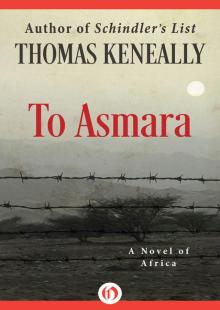 To Asmara: A Novel of Africa
To Asmara: A Novel of Africa A Woman of the Inner Sea
A Woman of the Inner Sea The Tyrant's Novel
The Tyrant's Novel Australians
Australians Schindler's Ark
Schindler's Ark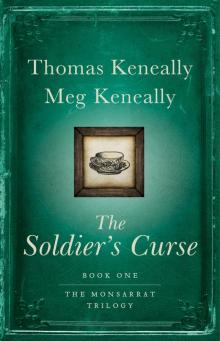 The Soldier's Curse
The Soldier's Curse Australians, Volume 3
Australians, Volume 3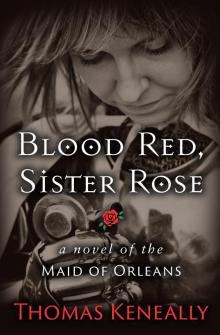 Blood Red, Sister Rose
Blood Red, Sister Rose A Victim of the Aurora
A Victim of the Aurora The Unmourned
The Unmourned Australians, Volume 2
Australians, Volume 2 To Asmara
To Asmara